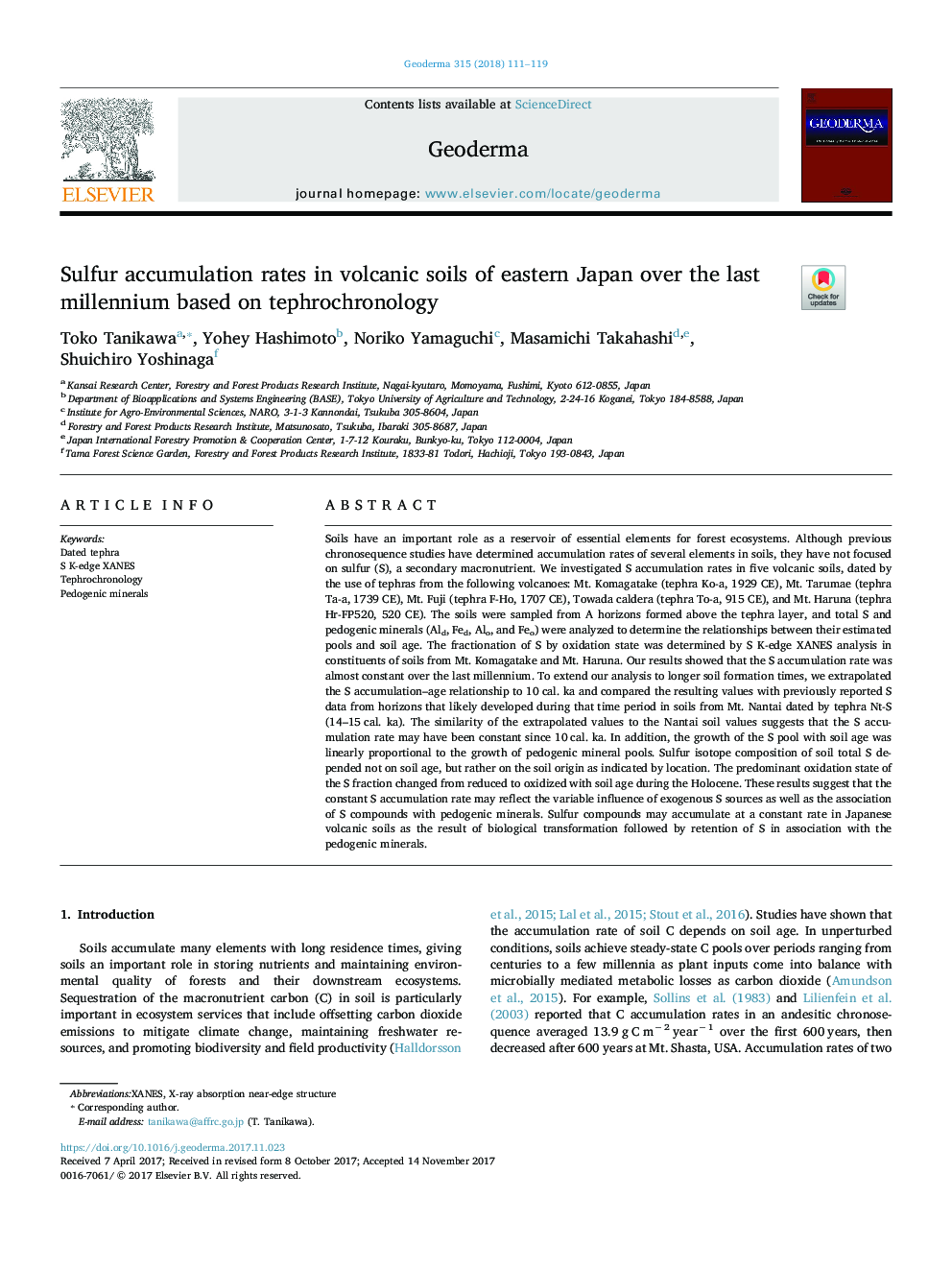| کد مقاله | کد نشریه | سال انتشار | مقاله انگلیسی | نسخه تمام متن |
|---|---|---|---|---|
| 8894262 | 1629402 | 2018 | 9 صفحه PDF | دانلود رایگان |
عنوان انگلیسی مقاله ISI
Sulfur accumulation rates in volcanic soils of eastern Japan over the last millennium based on tephrochronology
ترجمه فارسی عنوان
میزان تجمع گوگرد در خاک های آتشفشانی شرق ژاپن طی هزاره گذشته بر اساس
دانلود مقاله + سفارش ترجمه
دانلود مقاله ISI انگلیسی
رایگان برای ایرانیان
کلمات کلیدی
موضوعات مرتبط
مهندسی و علوم پایه
علوم زمین و سیارات
فرآیندهای سطح زمین
چکیده انگلیسی
Soils have an important role as a reservoir of essential elements for forest ecosystems. Although previous chronosequence studies have determined accumulation rates of several elements in soils, they have not focused on sulfur (S), a secondary macronutrient. We investigated S accumulation rates in five volcanic soils, dated by the use of tephras from the following volcanoes: Mt. Komagatake (tephra Ko-a, 1929 CE), Mt. Tarumae (tephra Ta-a, 1739 CE), Mt. Fuji (tephra F-Ho, 1707 CE), Towada caldera (tephra To-a, 915 CE), and Mt. Haruna (tephra Hr-FP520, 520 CE). The soils were sampled from A horizons formed above the tephra layer, and total S and pedogenic minerals (Ald, Fed, Alo, and Feo) were analyzed to determine the relationships between their estimated pools and soil age. The fractionation of S by oxidation state was determined by S K-edge XANES analysis in constituents of soils from Mt. Komagatake and Mt. Haruna. Our results showed that the S accumulation rate was almost constant over the last millennium. To extend our analysis to longer soil formation times, we extrapolated the S accumulation-age relationship to 10Â cal. ka and compared the resulting values with previously reported S data from horizons that likely developed during that time period in soils from Mt. Nantai dated by tephra Nt-S (14-15Â cal. ka). The similarity of the extrapolated values to the Nantai soil values suggests that the S accumulation rate may have been constant since 10Â cal. ka. In addition, the growth of the S pool with soil age was linearly proportional to the growth of pedogenic mineral pools. Sulfur isotope composition of soil total S depended not on soil age, but rather on the soil origin as indicated by location. The predominant oxidation state of the S fraction changed from reduced to oxidized with soil age during the Holocene. These results suggest that the constant S accumulation rate may reflect the variable influence of exogenous S sources as well as the association of S compounds with pedogenic minerals. Sulfur compounds may accumulate at a constant rate in Japanese volcanic soils as the result of biological transformation followed by retention of S in association with the pedogenic minerals.
ناشر
Database: Elsevier - ScienceDirect (ساینس دایرکت)
Journal: Geoderma - Volume 315, 1 April 2018, Pages 111-119
Journal: Geoderma - Volume 315, 1 April 2018, Pages 111-119
نویسندگان
Toko Tanikawa, Yohey Hashimoto, Noriko Yamaguchi, Masamichi Takahashi, Shuichiro Yoshinaga,
